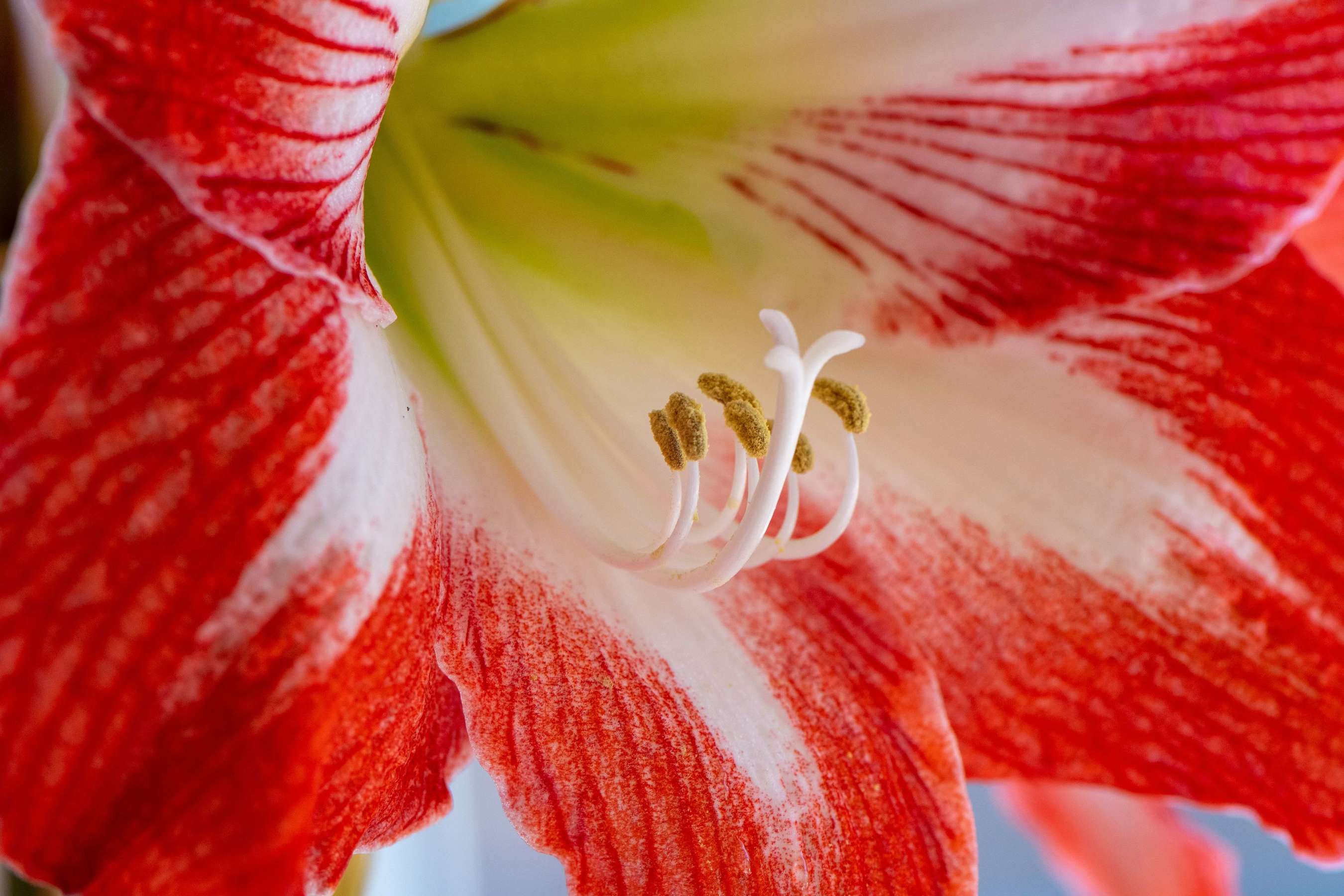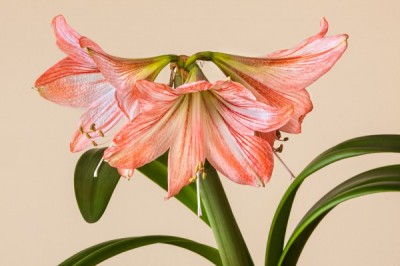Tricking a bulb to flower indoors, out of season, is called “forcing” but really it’s more like coaxing and is remarkably easy to do. This makes growing an amaryllis a very satisfying winter project. You can solve some of your gift-giving problems by planting the bulbs now in decorative pots. Come the holidays you’ll have beautiful amaryllis plants to give to family and friends.
An amaryllis usually has 4 flowers on top of a 12″ – 24″ stem. The blooms, when they emerge, are large and vibrant and last for several weeks indoors making this a great present. Bright red is the traditional color, presumable because it’s festive for the holidays but the flowers can range from white (which we love) to pale pink to the deepest red.
What you’ll need
- An amaryllis bulb – you can buy them online or at a garden center. Pick a big one. The bigger they are the more stalks they’ll have, which means they’ll produce more blooms. Store your bulbs in the crisper draw of your fridge until you are ready to plant them.
- A pot – choose a decorative one if you’re going to be giving the eventual plant as a gift. Make sure it has good drainage because waterlogged amaryllis won’t grow. There’s an art to picking the right sized pot. Make sure it’s about 2″ broader than the bulb to give the roots room to grow and to give this rather tall plant some stability. However, don’t choose a pot much bigger than that because amaryllis bulbs like to feel crowded in order to bloom.
- Some potting soil.
- Moss (optional).
- Water-soluble fertilizer.
Here’s what to do
- Take your pot and fill it about halfway with potting soil.
- Take the bulb, spread out its roots, and place it on the soil in the center of the pot.
- Hold the bulb whilst you gently place soil all around it, but leave the top 1/3 of the bulb exposed.
- Water and then top the soil with some moss, if you’re using it.
- Take the pot and put it in a warm sunny window.
- Water the bulb just enough to keep the soil moist and no more. Overwatering can cause problems, particularly at the beginning when the bulb is just sprouting. If anything, err on the side of caution, and only water it when the top inch of the soil has dried out. This is usually just once a week. Increase the frequency of watering once the flowers emerge to twice a week.
- Once the stalk grows and the buds are there, rotate the pot every few days to encourage even growth of flowers and a straight stem.
- Fertilize with a water-soluble fertilizer once the stem is growing (not before). A small amount of water-soluble fertilizer every 2 weeks is about the right frequency.
- Once the plant starts to flower and the buds show some color, take it out off the window sill and out of direct sunlight.
Getting your plant to bloom at the right time
This can be tricky because some amaryllis bulbs take longer to flower than others, but you should allow 6 -8 weeks. Planting in mid-November usually means you’ll have flowers by Christmas. If you want to time them to be in bloom for Thanksgiving or Chanukah just start 6 – 8 weeks before they’re needed.
If your amaryllis is being slow there are some tricks to speeding it up. The warmer the temperature the quicker it will grow so raising the temperature of the room is one way to accomplish this although a more practical (and economical solution) is to water the plant with warm water. You can also provide more heat to the bottom of the pot by putting it on a propagation mat or even on top of a warm (not hot) household appliance. Slow your blooms down by keeping your pot in a cooler (but not cold) spot in the house.
That’s really all there is to it!
Oh and one more thing… After your amaryllis has flowered, don’t throw it out or consign it to the compost heap. It’s a perennial and will flower again next year.





